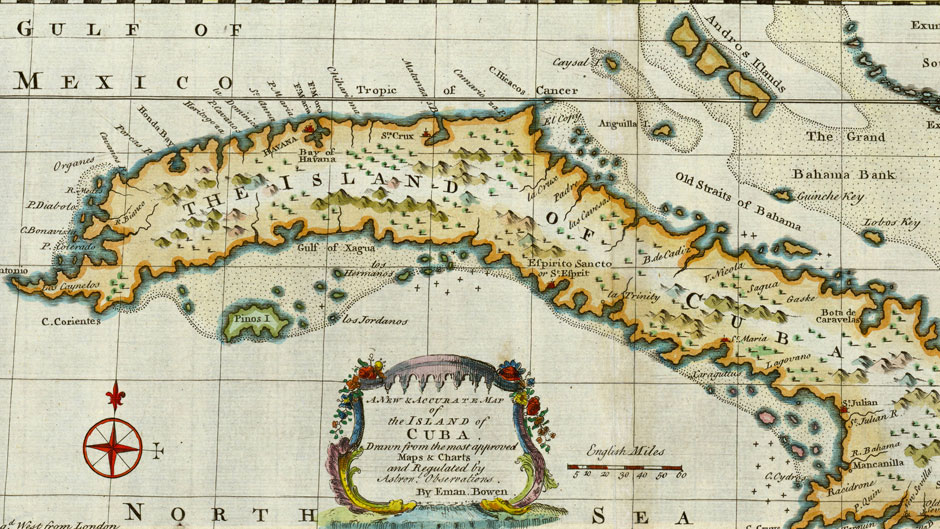Gladys Gómez-Rossié remembers sitting after lunch in the break room of the University of Miami Libraries in the late 1960s listening to a transistor radio as the Spanish-language station read the names of the Cubans who had arrived on the Freedom Flights that day.
Gómez-Rossié, community relations coordinator for the Cuban Heritage Collection, who left the island alone at age 14 in the Pedro Pan exodus, was hoping to hear her parents’ names mentioned, but her colleagues also wanted an update on how many of their compatriots had made it to Miami. Anything Cuban was of utmost importance to these Cuban-American library workers.
“We really thought that our exile would be short lived, but we knew that whatever was happening in exile we needed to document so we could take back to Cuba,” said Gómez-Rossié, who did not see her parents for 17 years.
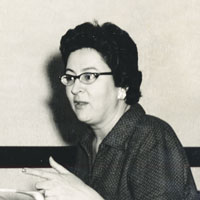
Keeping track of everything Cuban was the mission established by UM Cuban-American librarian Rosa M. Abella, who together with fellow librarians Ana Rosa Núñez, Esperanza Bravo de Varona, Lesbia Orta Varona and Gómez-Rossie, were the visionaries who created what is now the Cuban Heritage Collection, which was formally established in 1998. Abella and Núñez are both deceased.
The five founding women will be honored on Feb. 25 at a special event at the Roberto C. Goizueta Pavilion at the Otto G. Richter Library.
“The sixteen years that have passed since the opening of the Pavilion have been marked by remarkable growth and impact,” said Charles Eckman, dean of UM Libraries. “This collection – a crown jewel of the University of Miami and its Libraries – has had quite a historical trajectory. It is an amazing story, rooted in the extraordinary efforts of five Cuban-American librarians, all women.”
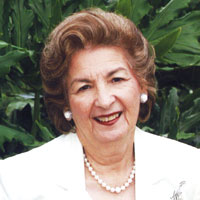
Elizabeth Cerejido, newly appointed CHC director and Esperanza Bravo de Varona chair, considers the CHC “the most remarkable accomplishment achieved by the Cuban exile community.”
“Not only is the scope and breadth of its collection unrivaled, but also the way this collective vision reflects how the founding women of the CHC understood the arc of Cuban history and its diaspora; that is, as all-encompassing, broad, interdisciplinary and inclusive.”
All five women worked in different sections of the library—acquisitions and special collections—but they had lunch together every day and treated each other like family, said Gómez-Rossié, who has worked at the Richter Library for 54 years.
On their own initiative and later aided by the administration, they collected documents, posters, newspapers, maps, books, and anything that had to do with the Cuban and Cuban exile experience.
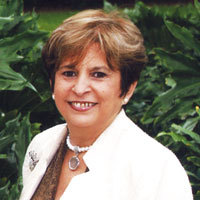
Among those documents was La Gaceta Oficial de Cuba, a newspaper published on the island that printed the names of all the lawyers who were registered with degrees. This became a huge draw to recently arrived Cuban lawyers who, with the help of the UM librarians, would copy these pages to verify their degrees’ authenticity to U.S. schools as they were recertified in exile.
For years, most of the collection of Cuban documents and periodicals were stored in “la jaula” (the cage), a steel contraption that sat in the third floor of the library. But other documents were spread throughout the different departments. The documents included post-revolutionary periodicals such as Granma, El Caimán Barbudo and Revolución y Cultura.
de Varona always had the vision that all Cuban documents, books, and maps should be housed together and that there should be a designated staff to help researchers explore the archives. She also knew the value of each piece they collected.
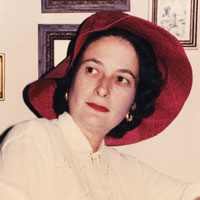
“What I wanted was to make sure that the truth about the history of Cuba was told,” said de Varona. “Since that government distorts everything about the island’s history, I wanted this collection to reflect the truth.”
de Varona’s leadership during more than 40 years brought many noted collections and donations to the CHC. UM Libraries later established the Esperanza Bravo de Varona chair in her name.
As the collection grew, the group and the library administration realized that they needed a fundraising arm and the Amigos of the Cuban Heritage Collection was founded. The inaugural co-chairs were former UM President Henry King Stanford and Elena Díaz–Versón Amos, a Cuban-American philanthropist. In 1994, a significant monetary donation on her behalf contributed to the establishment of the Collection in the Richter Library, said Orta Varona.
Today, the Amigos board of directors, chaired by Aida Levitan, are the best ambassadors for the CHC. One of their main goals is to raise funds so they can continue to “document the exceptional contributions of Cuban Americans” in the Luis J. Botifoll Oral History Project, which already has more than 100 interviews with Cuban-American leaders, said Levitan.
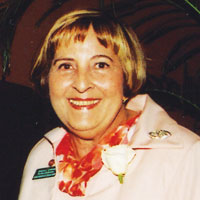
“CHC, through its fabulous collection, tells the story of Cubans and Cuban-Americans for the benefit of all Americans and others interested in Cuban history and culture,” said Levitan. “Esperanza de Varona and other Cuban-American women who founded CHC are to be commended for ensuring that the Cuban-American legacy will be preserved for posterity.”
The CHC now houses more than 200,000 precious documents, most of which are in the Goizueta Pavilion. The Goizueta Foundation also funded the Goizueta Foundation Graduate Fellowship Program to provide assistance for doctoral research at the CHC. More than 80 fellows have gone through the program.
Lesbia Orta Varona, who worked at UM Libraries for 46 years and was the CHC reference librarian and bibliographer, said the collection attracts hundreds of researchers because of its uniqueness.
“The CHC is the most comprehensive collection on Cuba that exists anywhere,” said Orta Varona. “There is nothing like it anywhere else.”
Among the rich artifacts it holds are:
- A first edition book of “Ismaelillo” written and signed by Cuban patriot José Martí, who had dedicated the book to his son.
- Original letters by several Cuban patriots, including a rare one by Antonio Maceo, a general in the Cuban War of Independence.
- The Cuban flag that draped the coffin of salsa queen Celia Cruz, and a pair of her shoes.
- An extraordinary black and white photo of the Mambises on horseback, the Cuban rebels who fought in the war against Spain. It is dated from the late 1800s.
- The Lydia Cabrera Collection: papers, documents and other objects of Cuba’s most celebrated ethnologist, who devoted her life to research the culture and religion of Afro-Cubans.
- The first recipe for the Bacardi daiquiri.
One researcher who found CHC invaluable is Martin Tsang, now CHC librarian and curator of Latin American collections. Back in the early 2000s, he wanted to find information about the influence of the Chinese culture on the Afro-Cuban religion (Santeria). He knew that what he was looking for was rare and perhaps non-existent. He took “a leap of faith” and called the CHC.
Gómez-Rossié helped him. “I found everything I needed of the Chinese influence in Lydia Cabrera’s papers,” Tsang said. He later became one of the first Goizueta Fellows at the library and was able to complete his thesis for his Ph.D. on that topic.
“The CHC changed my life,” he said.
